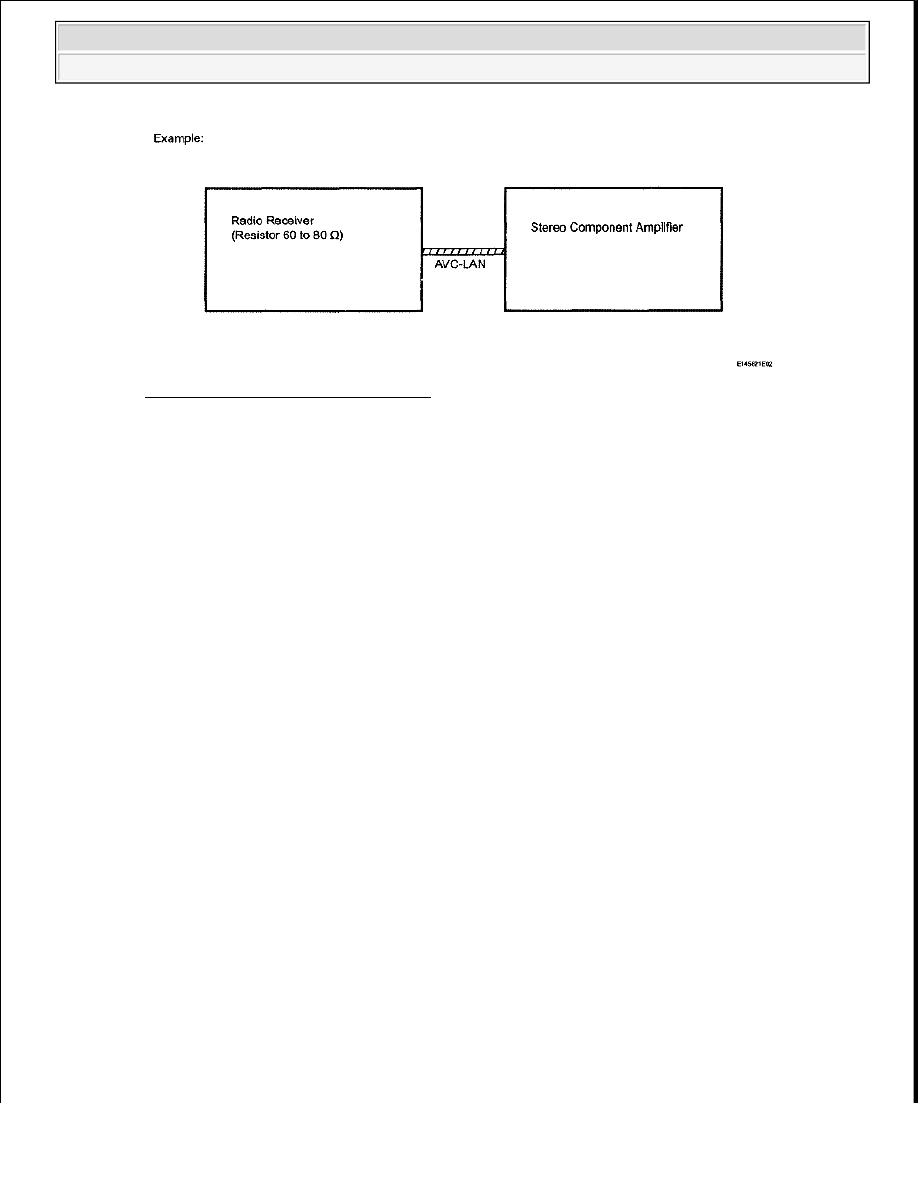Toyota Tundra. Manual - part 180

Fig. 133: AVC-LAN - Block Diagram
Courtesy of TOYOTA MOTOR SALES, U.S.A., INC.
AVC-LAN, an abbreviation for "Audio Visual Communication Local Area Network", is a united
standard developed by the manufacturers in affiliation with Toyota Motor Corporation. This
standard pertains to audio and visual signals as well as switch and communication signals.
b. Purpose:
Recently, car audio systems have rapidly developed and the functions have vastly changed. The
conventional car audio system is being integrated with multi-media interfaces similar to those in
navigation systems. At the same time, customers are demanding higher quality from their audio
systems. This is merely an overview of the standardization background. The specific purposes are
as follows:
1. To solve sound problems, etc. caused by using components of different manufacturers
through signal standardization.
2. To allow each manufacturer to concentrate on developing products they do best. From this,
reasonably priced products can be produced.
HINT:
If a short to +B or short to ground is detected in the AVC-LAN circuit, communication
is interrupted and the audio system will stop functioning.
If the audio system has a navigation system installed, the multi-display unit acts as the
master unit. If the navigation system is not installed, the audio head unit acts as the
master unit instead. If the radio and navigation assembly is installed, it is the master
unit.
4. COMMUNICATION SYSTEM OUTLINE
a. Components of the audio system communicate with each other via the AVC-LAN.
b. The master component of the AVC-LAN is a radio receiver with a 60 to 80 ohms resistor. This is
essential for communication.
c. If a short circuit or open circuit occurs in the AVC-LAN circuit, communication is interrupted and
the audio system will stop functioning.
2009 Toyota Tundra
2009 ACCESSORIES AND EQUIPMENT Audio/Visual - Tundra